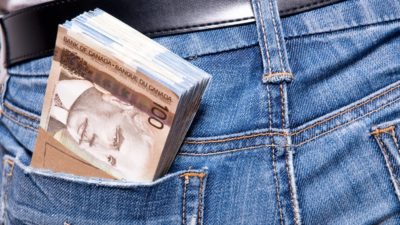If you’re not eligible for EI and are unemployed due to COVID-19, there’s a good chance that you’ve heard about the CRB. It’s the new post-CERB program for non-EI eligible people. Paying $500 a month, it provides about as much financial security as the CERB did.
The CRB is a much-needed financial lifeline for unemployed Canadians. But there’s been some confusion about how to apply for it.
Unlike the CERB, which covered almost all unemployed people, the CRB is only for certain Canadians. Basically, if you’re formerly self- employed, currently unemployed, and not eligible for any other COVID-19 benefits, you apply for the CRB. That’s straightforward enough.
But what about actually applying for the benefit? Even if you think you’re eligible, there’s still the matter of moving your application forward. That’s a little more complicated. However, if you follow the three steps below–all directly from the CRA–you should be good.
Step 1: Register with the CRA
If you don’t have CRA MyAccount set up, you need to get on that. You probably already have an account, whether you realize it or not. It’s the online portal you use to check your tax information. If you aren’t sure whether you have an account, check the CRA page under Canada.ca. You log in using your bank account, so no special username or password is required.
Step 2: Set up direct deposit
If you don’t have direct deposit set up, then you should get it set up. It helps you get paid in 3-5 days, instead of the 10-12 days it would take by mail. While this step isn’t strictly mandatory, it’s a very good idea.
Step 3: Mark October 12 on your calendar
Finally, if you plan to apply for the CRB, you should mark October 12 on your calendar. That’s the first day you can actually start an application through CRA MyAccount. While CRB payment periods stretch back to September 27, the CRA is still rolling out the actual application process. On October 12, it will go live.
Foolish takeaway
The CRB is a necessary step for the Canadian economy. While the CERB has ended, unemployment has not. Many people are still losing their jobs to COVID-19 related issues to this day. So the economy really needs benefits to keep consuming spending afloat.
This impacts more than just your paycheque. It impacts your investments too. If you hold an index fund like the iShares S&P/TSX Capped Composite Index Fund (TSX:XIC), a good few shares in your portfolio require strong consumer spending to make money. Without it, their earnings would decline, and their share prices would follow.
Programs like the CRB therefore support you in two ways. First, they provide you with a substitute for your employment income. Second, they keep consumer spending afloat, which is good for your investment portfolio.
Whether you hold ETFs like XIC or individual stocks, your RRSP and TFSA are probably supported by consumer spending somewhere along the line. So benefits like the CRB have more benefits than you may realize.








